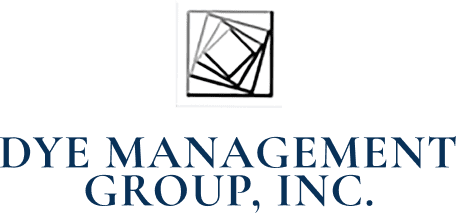

Latest News
Maricopa County DOT wins National Association of Counties (NACo) Achievement Awards for Asset Condition Assessment Process. DMG worked with Maricopa County (MCDOT) to document existing asset management and maintenance processes, conduct a transportation asset management (TAM) assessment, develop a TAM roadmap and improvement plan, and facilitate the implementation of the improved and sustainable asset management program. As part of this effort, DMG developed an approach for collecting asset condition data and a performance-based budgeting tool to help MCDOT define funding levels to achieve their asset level of service (LOS) targets. The condition assessment program enables MCDOT to better understand the current LOS of each its roadway assets. It also allows MCDOT departments to take a more comprehensive look into the way they manage assets and to identify funding and resource needs necessary to achieve target LOS levels. This performance-based approach to roadway asset management enables MCDOT to utilize public funds most effectively.
DMG helps quantify needs for Wyoming DOT: New report projects $354 million in annual unfunded needs for WYDOT.
“Frankly, Pretty Impressive” Montana Transportation Department, Maintenance Quality Assurance Project. In 2017, the Montana Legislative Audit Committee performed a performance audit of the Maintenance Division of the Montana Department of Transportation (MDT). The findings required the MDT to develop maintenance performance measures and goals to better enable the department to assess performance statewide and at the division and section levels. To improve agency performance and satisfy the requirements of the audit, MDT contracted with Dye Management Group, Inc. (DMG) to develop and implement a level of service (LOS)-based approach for maintenance budgeting. Performance-based maintenance approaches allow MDT to plan, budget, and manage maintenance using the necessary resources to achieve target service levels. Further, implementing maintenance management best practices will enable MDT to annually evaluate its progress toward achieving its performance measure goals and prioritize its maintenance backlog based on desired outcomes rather than reacting to maintenance issues as they arise. The results of the project were reviewed and positively received by the Legislative Audit Committee. A representative from the Legislative Audit Committee then presented the findings to the Transportation Interim Committee, calling the program “frankly, pretty impressive.”
Video from the presentation can be found at the following link. Discussion of the MQA project begins at 13:00 minutes into the video. The video can be found here: Video
The Louisiana Transportation Research Center publishes a paper of DMG’s on going project work. The paper can be found here: An Assessment of DOTD’s Consulltant Plan Developement and Performance Rating Process.
The Utah DOT published DMG’s research report on Back-of-Curb Evaulation Study. The report, ” Back-of-Curb Evaluation Study: State Highway Right of Way Responsibility.” By Utah’s current statutes and administrative rules, the responsibility for ROW usage behind the curb within municipalities rests with the municipality. DMG performed a study of the current laws and practices to determine if UDOT is properly positioned to control its ROW and benefit from deployment of 5G technologies and infrastructure.
The study looked at how the current laws and rules affect DOT operations and project development, create risks for the Department, and cause logistical problems with local municipalities for ROW usage. It included a peer state survey to identify the state of the practice related to managing 5G deployment on state highway ROW. The study recommended possible changes to Utah statutes, administrative rules, regulations, and practices to ensure that UDOT has proper ROW jurisdiction and is successfully positioned for 5G deployment.
National Cooperative Highway Research Program (NCHRP) publishes Research Report 879. The report, “Guide for Optimal Replacement Cycles of Highway Operations Equipment.” DMG worked with the NCHRP to develop a guide and a tool for determining optimal replacement cycles for highway operations equipment. In this effort, we identified optimal equipment replacement cycles and provided
the American Association of State Highway and Transportation Officials (AASHTO) and state DOTs with a Guide for Optimal Replacement Cycles of Highway Operations Equipment to provide best-practice methodology and a tool to help successfully achieve optimal replacement for highway operations equipment and vehicles.
The Michigan DOT published DMG’s research report on the benefits and costs of using remote-sensing technology. The report, “RC-1607 – Monitoring Highway Assets with Remote Technology,” identifies and summarizes useful, feasible, and cost-effective remote technologies available and presents recommendations to the DOT to provide guidance in the acquisition of such technologies.
DMG, in conjunction with the Arizona DOT, presented at the 2014 AASHTO Subcommittee on Maintenance Conference in Charleston, WV. Rob Zilay delivered a presentation on our recent work with the Arizona DOT. The presentation focused on the needs-based maintenance budget model allocation tool we developed to help the Arizona DOT allocate funds in a systematic way at the district level based on needs and priorities and address the gap between available resources and maintenance needs.
DMG worked with the Michigan DOT on a study to evaluate the benefits and costs of using remote-sensing technology to monitor the location, quantity, and quality of various highway assets. The project’s objective is to reduce MDOT’s reliance on field staff for monitoring highway assets and facilitate the transition to a technology-based surveying system, which will cut down on costly—and at times, hazardous—fieldwork. The results of this study are presented in a Michigan DOT Research Spotlight (July 2014).
DMG worked with the Alaska DOT&PF to support the agency through the implementation of the IRIS ERP system. The IRIS Project is a statewide effort to implement a new accounting, financial, procurement, payroll and human resource management software solution for the State of Alaska.
DMG’s work included project management, change management, FHWA certification, as well as implementation support. DMG is providing continued support for Alabama DOT’s implementation of its maintenance management system, called RoadMAP (or the Road Maintenance Accountability Program), and the transition of the DOT’s bridge management system from ABIMS to AASHTOWare BrM (formerly Pontis). In this third project phase, we are also creating the DOT’s transportation asset management plan (TAMP) and developing the district management training course for maintenance and asset management best practices. DMG assisted the Colorado DOT (CDOT) with the development and implementation of an in-house portfolio management, cash management, and program management capability for its capital improvement program. As a subconsultant, DMG managed the definition of the business systems and management processes, which allowed CDOT to plan, manage, track, and deliver its programs and projects as cohesive risk portfolios. DMG also supported the DOT with implementation of the systems and management processes needed to ensure the timely delivery of the program.
DMG provided the Oregon Department of Administrative Services (DAS) with enterprise readiness assessment consulting services for its Human Resource Information System (HRIS) project. These services included requirements definition, business process engineering, organizational analysis, change management planning, gap analysis, and risk identification and mitigation. The HRIS project seeks to replace two legacy HR systems with a modern HRIS that can be expanded at a later date with additional functionality, such as payroll and time keeping or budget tracking. The HRIS project will also look for opportunities to consolidate like HR processes across agencies to provide a shared service model. As part of this project, DMG developed and finalized the business case and feasibility study in order for Oregon DAS to present the business case for funding approval.
DMG helped the Louisiana DOTD and Texas DOT to develop comprehensive and realistic TAMPs that will improve the agencies’ asset management business processes. DMG worked with the DOTs to review and document current equipment processes and systems; compare processes against DOT and national best practices; developed a recommended future model; conducted a review workshop with stakeholders; and developed an implementation plan.
DMG, in conjunction with the California and Michigan DOTs, presented at the 2013 AASHTO Subcommittee on Maintenance Conference in Burlington, Vermont. Rob Zilay delivered two presentations on our recent work with Caltrans and Michigan DOT. One presentation focused on the maintenance life-cycle cost analysis tool we developed to help Caltrans select highway project alternatives and products that lower life cycle costs, improve safety, and reduce worker exposure. The other presentation outlined the results of the Michigan DOT study to monitor highway assets with remote technology.
DMG built the Colorado Construction Cost Forecast Model to estimate the changes in the costs of the highway construction program administered by the Colorado DOT. The output of the forecasts is the percentage change in the composite Colorado Cost Construction Index (CCCI) each calendar quarter that is due to changes in price, rather than to changes in quantity. The Colorado DOT will use this model to forecast the cost of highway projects over the time horizons of the Statewide Transportation Improvement Plan and the Statewide Long-Range Transportation Plan. The CCCI model documentation and supporting technical notes are available online at TRB.
DMG, in conjunction with the Alabama and Mississippi DOTs, presented at the 2012 AASHTO Subcommittee on Maintenance Conference in Seattle, Washington. The presentation focused on how state transportation agencies can benefit from sharing information with each other during the planning and implementation phases of performance-based maintenance programs and modern maintenance management systems. To view the presentation, “Crossing State Lines: How State-to-State Collaboration Improves DOT Maintenance Programs,” click on the following link and scroll down to Thursday, July 19, 2012.
www.wsdot.wa.gov/partners/scom2012/ConfGlance.htm
DMG conducted a study for the Michigan DOT (MDOT) to evaluate the benefits and costs of using remote-sensing technology to monitor the location, quantity, and quality of various highway assets. The objective of this project is to reduce MDOT’s reliance on field staff for monitoring highway assets and facilitate the transition to a technology-based surveying system, which will cut down on costly—and at times, hazardous—fieldwork. Our research familiarized MDOT with available remote-sensing technology and helped the department prioritize its approximately thirty roadside assets—based on their importance to maintenance activities and the cost of implementing the technology—to determine the best candidates for monitoring. We also identified tools and processes for collecting, storing, analyzing, sharing, and updating highway asset attribute information.
DMG provided the Louisiana Department of Transportation and Development (LADOTD) with postimplementation support following the implementation of the state’s new LaGov enterprise business system. To ensure that the new system continues to be refined and used effectively, our team conducted an assessment of its first year, which included an evaluation of system usage, validation of processes and requirements, and recommendations for improvements. We also assisted in the development and presentation of workshops that show LaGov business users how to use the system properly and efficiently. Additional responsibilities included facilitating, leading, and supporting agency-level business process improvements, as well as assisting the LADOTD project manager by providing project management and organizational change management.
DMG worked with the Colorado Department of Transportation (CDOT) on the Project Pipeline Model to minimize the impact of program delivery uncertainties. We developed a simulation tool/model incorporating the various factors that affect project workflow, such as cash management, shortage of supply and labor, and right-of-way assessment. Based on the results of the model, we made recommendations for the ideal project mix, project timing, and project schedule; provided an estimate of the costs of remedying uncertainties; analyzed scenarios to find the best solutions for resolving potential risks; and provided a final risk management approach.
DMG worked with the Federal Highway Administration (FHWA) to assess performance-based prequalification for construction contractors. To accomplish this, we evaluated the costs and benefits of using performance bonding versus using various degrees of performance-based contractor prequalification. The final product will provide information about the cost effectiveness of performance bonds, guidance for state highway agencies who wish to develop and transition to a performance-based contractor prequalification system, and recommendations for how to best implement these systems. FHWA published a technical summary of this project in early 2014.

